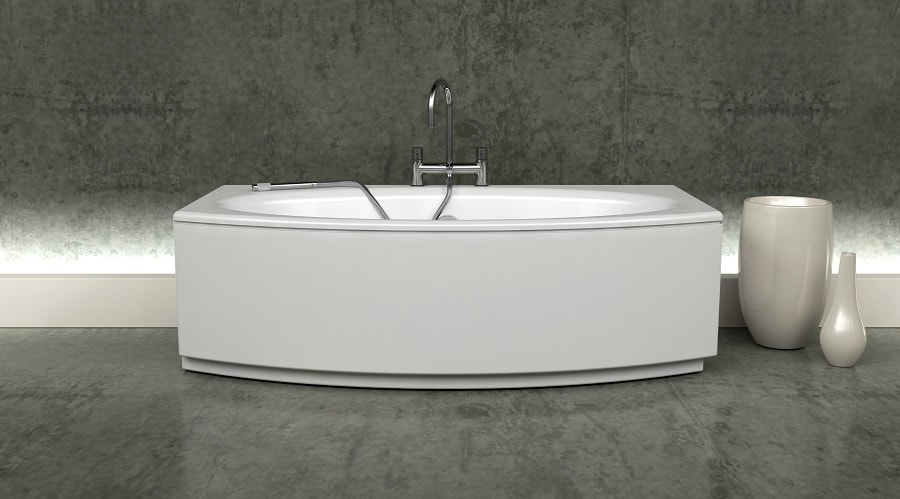
Owing to their classy look, easy-cleaning and high durability floor tiles are undoubtedly the best. But after a little wear and tear they start losing their liuster; they fall victim to dirt, stains, and discoloration making your interiors look dingy and shabby. it’s the bathroom tiles that suffer the first round of discoloration because of their constant exposure to dirt, soap, and water. And in case you’ve recently experienced the same and wondering how to fix discolored tiles on the shower floor, you’ve come to the right place!
Tiles are an essential part of any home or commercial space. They not only provide a decorative aspect but also serve as practical, functional surfaces. However, over time, tiles can become discoloured due to constant exposure to dirt and grime. Discoloured tiles can be an eyesore and make your space look unappealing.
If you’re wondering how to fix discoloured tiles, there are several methods you can try without having to replace them altogether. In this article, we’ll explore some of the most effective ways to restore your tiles’ original colour and shine. Whether it’s for your bathroom walls or kitchen floors, these tips will help bring back the beauty of your tiled spaces in no time!
Tile discoloration can be caused by various factors. Here are some common causes of tile discoloration:
By understanding the causes of tile discoloration, you can take steps to prevent it from occurring. Proper cleaning and maintenance, including sealing the grout, can help keep your tiles looking their best.
Fixing discoloration in tiles is neither complex nor expensive. You can remove floor-based discoloration with some of the most common household cleaning products that are easily available at the local stores. Continue reading and help yourself fix discolored bathroom tile.
The method for fixing tile discoloration depends on the cause of the discoloration. Here are some possible solutions:
Make your bathroom floor dust-free: The first step to fix discolored bathroom tile is to make it dust-free. Remove any dust that might have accumulated on your shower floor using a vacuum cleaner, broom, feather duster, or anything that you have handy in your home. In case you plan to use your vacuum cleaner make sure that you go through the user manual and determine if there are tile-specific settings. If yes, then set it accordingly and make your bathroom dust and dirt free. If the discoloration is caused by dirt or grime, cleaning the tiles with a pH-neutral cleaner and a soft-bristled brush may be enough to restore their original color.
Remove efflorescence: If the discoloration is caused by efflorescence, you can remove it with an acidic cleaner or a solution of water and vinegar. Be sure to rinse the tiles thoroughly after cleaning.
Replace the grout: If the discoloration is caused by dirty or stained grout, you may need to replace the grout. This will involve removing the old grout and applying new grout.
Seal the grout: If the discoloration is caused by moisture or dirt penetrating the grout, sealing the grout may help prevent further discoloration. Be sure to clean the grout thoroughly before applying the sealer.
Clean the affected areas with plain water: Once you are done dusting the discolored floor tiles, clean the area thoroughly with plain water. You can use a damp sponge or a paper towel and scrub the discolored tiles to remove loose pieces of dirt or filth that might have accumulated on the floor. Give the floor vigorous scrubbing. The better you clean your tiles, the easier it will be for you to fix tile discoloration. Once done, the next step is to prepare a discoloration-removing solution. What kind of adhesive to use on shower tile
Replace the tiles: If the discoloration is caused by a defect in the tile, such as a manufacturing flaw or a crack, you may need to replace the affected tiles.
Making the solution: The discoloration-removing solution is a simple homemade solution comprising of a quarter cup white vinegar, a quarter cup baking soda, 1 tablespoon liquid soap, and 2 gallons of warm water. You can also use ammonia instead of vinegar and baking soda.
Apply the solution on your shower floor: Wear a pair of clean gloves and start applying the solution with a spray bottle or even a bucket. Mop the floor as you apply the solution. If you are using the ammonia-based solution, ensure that your bathroom is properly ventilated, or you can also open any adjacent doors and windows because the ammonia-based solution carries a strong smell. After the solution is applied all over the tile, use a mop or a scrum brush to scrub the discolored areas. If the discoloration is a tough one, you might have to scrub the tiles vigorously to remove the same. Once you get rid of the tile-based discoloration, clean up the remaining traces of the solution Take a break and then come back to examine if you have been able to remove all the discoloration. This solution works miraculously well in fixing discoloration in tiles.
Before attempting to fix tile discoloration, it’s important to identify the cause of the discoloration. If you’re unsure, it may be best to consult a professional tile installer or contractor.
Preventing Discoloration: Now you have a discoloration-free shower tile, you will certainly want to ensure that they don’t undergo discoloration yet again. One of the best ways to prevent discoloration is routine cleaning of the bathroom. Cleaning your bathroom tiles, toilets, and faucets from time to time prevents discoloration. Also, make sure that your bathroom is properly ventilated because excessive moisture on the shower floor leads to discoloration. Finally, use only those cleaning products that are meant for cleaning tiles. Products not suited for tiles will cause discoloration that is tough to remove.
In conclusion, discoloured tiles can be an eyesore and give the impression of poor maintenance. However, there are a variety of methods and products that can help restore your tiles to their original shine and colour. From using bleach solutions to hiring professional cleaners, there is a solution for every budget and level of difficulty. It’s important to consider the cause of the discolouration before choosing a method to ensure long-lasting results. With a little effort and patience, you can have your tiles looking like new again in no time! So don’t let discoloured tiles bring down the appearance of your space – take action today and restore their beauty.

Welcome to Tile Pro Depot! We established this site to service the specific needs of the tile installation professional. Tile installation tools, tile setting materials, premixed grout and more tile installation products online at Tile Pro Depot.